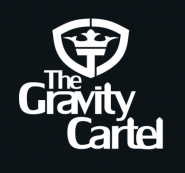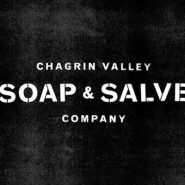The Future of Retail Planning
In the fast-paced world of retail, planning for the future is a constant endeavor, whether it’s breaking into new markets, attracting new customers, optimizing online sales, or enhancing core business efficiency. A budget serves as the financial blueprint of these strategic plans for the upcoming year, acting as a measure against which actual performance is evaluated. In retail, a budget is crucial for managing operations like inventory purchasing and staffing. Crafting an accurate budget is both an art and a science; however, following the nine steps outlined in this guide can help retail leaders create a budget that keeps their business on track throughout the year.
What is Retail Budgeting?
Retail budgeting involves creating a detailed financial plan before the start of the fiscal year. This plan, known as a retail budget, outlines expected sales, costs, and profitability, turning the retailer’s business strategy into financial terms. It guides daily decisions on inventory, staffing, promotions, and more. Throughout the year, actual sales are compared to the budget, analyzing deviations to understand trends and make necessary adjustments. Costs are also benchmarked against the budget to optimize profitability.
Retail Budgeting Unveiled
Retail budgeting sets financial goals based on historical data and future trends. The process typically starts with sales estimates, factoring in variables like customer demand, pricing, and inventory. This data forms a budgeted income statement, which leads to a budgeted balance sheet and cash flow statement.
There are two main approaches to creating budgets:
- Zero-based Budgeting: This comprehensive method builds the budget from scratch, which is ideal for startups or businesses undergoing significant changes.
- Incremental Budgeting: This method adjusts the current period’s forecast based on expected changes and is suitable for established businesses.
The Importance of Retail Budgeting
Creating an accurate and timely budget is vital for several reasons:
- Unified Purpose: Budgets align the entire staff towards common goals.
- Accountability: Defines targets for all functional areas and sets the basis for variable compensation plans.
- Profit Planning: Identifies planned profits and cash flow needs, guiding reinvestment and distribution decisions.
Elements of Retail Budgeting
Budgeting starts with a budgeted income statement, which informs the balance sheet and cash flow statement. Key elements include:
- Revenue Budget: Estimating sales volume, pricing, and market trends to set revenue targets.
- Gross Profit Margin: Calculating gross profit by deducting the cost of goods sold (COGS) from revenue.
- Cost Estimation: Layering in fixed, variable, discretionary, and non-operating expenses to complete the income statement.
Types of Retail Budgets
Retailers may develop various sub-budgets to focus on specific aspects, such as:
- Operating Budget: Core business activities, including sales and administrative expenses.
- Cash Flow Budget: Planned cash inflows and outflows to ensure financial stability.
- Financial Budget: Overall budget encompassing the balance sheet, income statement, and cash flow.
- Sales Budget: Detailed breakdown of revenue variables by period.
- Purchase Budget: Planned inventory purchases and necessary equipment.
- Overhead Budget: Administrative and miscellaneous expenses.
- Labor Budget: Costs related to staffing and employee benefits.
- Static Budget: A fixed benchmark for measuring actual performance.
The Retail Budgeting Process in 9 Steps
- Setting Financial Goals: Align the budget with strategic objectives.
- Reviewing Historical Data: Analyze past performance and market trends.
- Forecasting Sales: Estimate next year’s sales based on current trends.
- Estimating Costs: Forecast expenses to provide a baseline for the budget.
- Writing a Sales Budget: Develop detailed revenue projections.
- Making a Cost Budget: Plan all expenditures for the budget period.
- Creating a Budgeted P&L Statement: Combine revenue and expense forecasts.
- Designing a Cash Flow Plan: Ensure sufficient cash flow throughout the year.
- Monitoring and Adjusting: Regularly compare actual results with the budget and make necessary adjustments.
Common Retail Budgeting Challenges
- Inventory Management: Balancing stock levels to meet demand without overstocking.
- Supply Chain Issues: Navigating product shortages and fluctuating costs.
- Financial Uncertainty: Adapting to economic changes affecting consumer spending.
- Cash Reserves: Ensuring sufficient cash flow in a low-margin industry.
- Profit Margins: Managing thin margins through accurate pricing and cost controls.
- Operating Costs: Budgeting for diverse expenses with varying dynamics.
- Unexpected Losses: Accounting for unanticipated revenue and expense fluctuations.
- Labor Expenses: Aligning labor budgets with scheduling and financial systems.
The Role of Technology in Retail Budgeting
Budgeting is a critical component of effective business management, and an ERP system like Versa Cloud ERP significantly enhances this process. Versa Cloud ERP supports comprehensive budgeting by seamlessly integrating with key business areas such as sales, marketing, finance, and procurement, leading to better decision-making, and optimized resource utilization. The system streamlines budget creation by providing intuitive templates, ensures efficient approval workflows, and meticulously tracks actual performance against budgeted figures. This integration helps businesses maintain financial discipline and agility. Moreover, Versa Cloud ERP delivers precise financial reporting, offering real-time insights and analytics, which are essential for making strategic adjustments and achieving financial goals. By leveraging these capabilities, Versa Cloud ERP empowers organizations to stay on track and drive sustained growth.
Conclusion
Retail budgeting is a crucial financial management tool that unites various business operations and aligns teams with common goals. Applying diligence and leveraging the right technology can significantly improve budgeting accuracy and efficiency, helping retailers navigate the complexities of their industry and achieve financial success.
Key Takeaways
- Strategic Alignment: Budgets translate a company’s strategic plans into financial terms.
- Operational Guidance: Retail budgets allocate resources and guide day-to-day decisions.
- Accuracy through Process: Following a structured, nine-step process enhances budget accuracy.
- Industry Challenges: Retail budgeting presents unique challenges due to industry dynamics.
- Software Solutions: Advanced budgeting software simplifies and improves the budgeting process.
A Small Business in the modern day is complex and requires resources to deliver on its goals and achieve its full potential. To create a small business success story business owners need an ERP system that grows with them.
Effectively manage your financials, inventory, and production workflows with our award-winning ERP.
Let Versa Cloud Erp’s do the heavy lifting for you.
Do Business on the Move!
Make your businesses hassle-free and cut the heavyweights sign up for the Versa Cloud ERP today!!
Join our Versa Community and be Future-ready with us.











